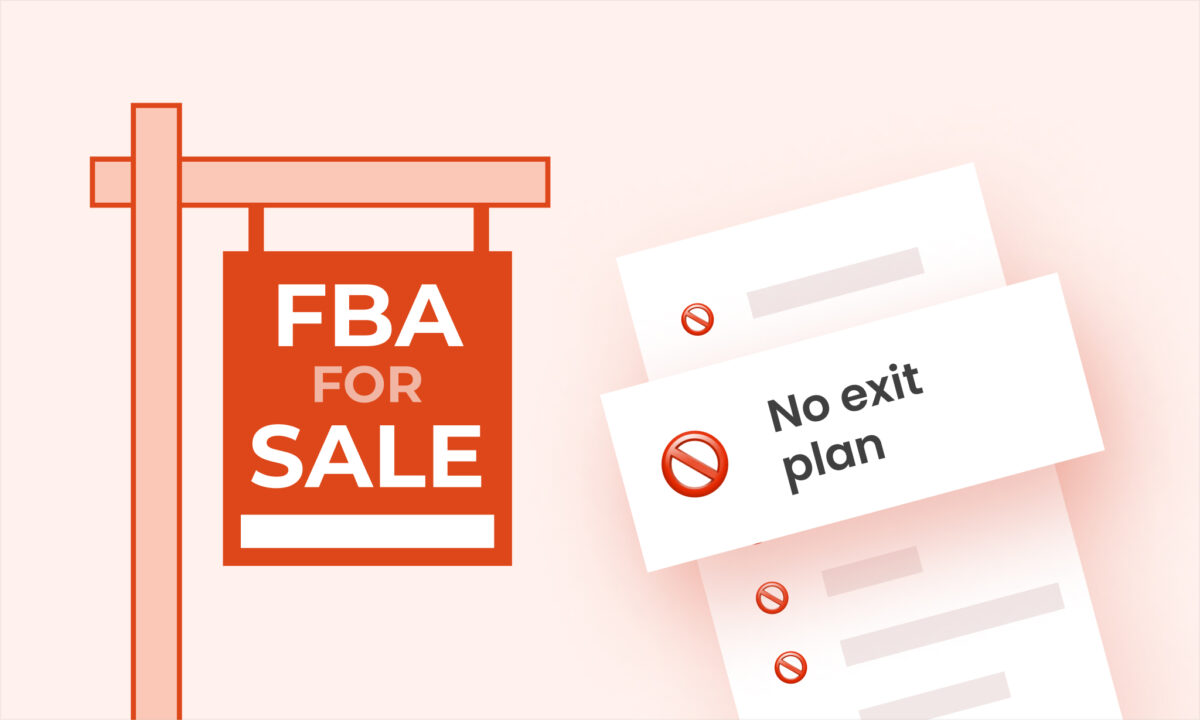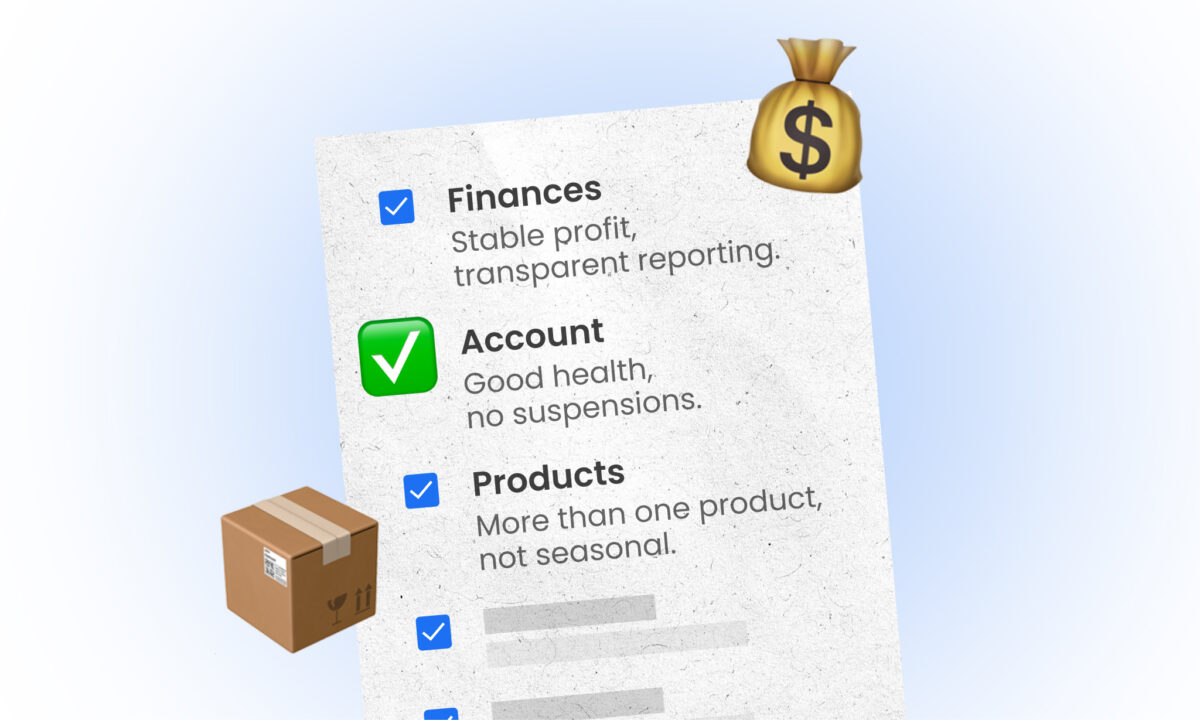Avoid these pitfalls to maximize your business’s value and ensure a smooth sale
Selling your Amazon FBA business can be a rewarding way to cash in on your hard work, but it’s a process filled with potential pitfalls. With the Amazon FBA acquisition market thriving—reaching a deal volume of $25 billion in 2025 and businesses selling at an average of 5.2 times their EBITDA—sellers have a prime opportunity to secure a lucrative exit. However, many sellers make mistakes that can lower their business’s value or derail the sale entirely. In this article, we’ll explore the top mistakes sellers make when listing their Amazon FBA business and provide actionable steps to avoid them. Our goal is to help you navigate the sale process with confidence, ensuring you maximize your business’s value.
Market Overview
The Amazon FBA acquisition market is robust, with a total deal volume of $25 billion in 2025 and an average sale multiple of 5.2 times EBITDA. With over 600,000 FBA sellers globally and third-party sellers accounting for 61% of Amazon’s sales in 2023, the marketplace is highly competitive, and buyers are selective. To stand out, sellers must avoid common errors that can undermine their business’s appeal and ensure their listing attracts serious offers.
The Top 10 Mistakes Sellers Make When Listing Their Amazon Business
Below, we outline the top 10 mistakes sellers make when listing their Amazon FBA business, based on insights from industry leaders. Each mistake includes why it’s problematic and actionable steps to avoid it.
| Mistake | Why It’s a Problem | How to Avoid It |
| Not Having an Exit Plan | Leads to undervaluation or poor timing, reducing sale proceeds. | Develop a clear exit strategy with valuation and timeline, ideally 6–12 months in advance. |
| Being Underprepared | Results in lower offers or failed deals due to disorganization. | Automate processes, prepare documents, and vet buyers early. |
| Not Reading the Fine Print | Violating Amazon’s policies can lead to legal issues or deal collapse. | Understand transfer options and align with buyer goals. |
| Poorly Maintained Financials | Raises red flags, lowering valuation and buyer trust. | Keep updated, detailed financial records and inventory lists using accounting software. |
| Wrongful Valuation | Unrealistic expectations from temporary boosts derail negotiations. | Base valuation on sustainable growth and market trends, consulting professionals. |
| Not Addressing Legal Issues | Unresolved liabilities can cancel deals or reduce offers. | Consult an attorney to clear licenses, permits, and lawsuits. |
| Rushing the Sale | Prioritizing speed over value can lead to lower prices and complications. | Take time to find the right buyer and ensure a smooth transition. |
| Not Timing the Sale Optimally | Misses peak valuation periods when sales and margins are highest. | Sell during or after high seasons, e.g., January for holiday products. |
| Being a Reseller | Less attractive to buyers due to competition and lack of brand value. | Focus on private label products to build unique brand equity. |
| High Owner Involvement | Reduces value for buyers seeking passive investments. | Outsource operations to virtual assistants or contractors to make the business more passive. |
1. Not Having an Exit Plan
Why it’s a mistake: Without a clear exit strategy, sellers may undervalue their business or sell at a suboptimal time, leading to lower proceeds.
How to avoid it: Develop a comprehensive exit plan that includes a professional valuation, a realistic timeline, and steps to prepare the business for sale. Start planning 6–12 months in advance to ensure readiness.
2. Being Underprepared
Why it’s a mistake: Rushing the sale without proper preparation can result in incomplete documentation or operational inefficiencies, leading to lower offers or failed deals.
How to avoid it: Prepare at least 6–12 months ahead by automating business processes, delegating tasks, and compiling all necessary documents, such as financial statements and seller account data. Vet potential buyers early to ensure alignment.
3. Not Reading the Fine Print
Why it’s a mistake: Amazon prohibits selling Seller Central accounts directly, and misunderstanding these policies can lead to legal complications or deal failures.
How to avoid it: Familiarize yourself with Amazon’s policies on business transfers. Options include transferring product pages (time-intensive) or arranging an account takeover (faster). Ensure the buyer’s goals align with yours to avoid unfavorable terms.
4. Poorly Maintained Financials
Why it’s a mistake: Buyers prioritize businesses with clean, up-to-date financial records. Disorganized or incomplete financials can raise red flags, lowering the business’s valuation.
How to avoid it: Maintain updated balance sheets, tax records, and account records using accounting software. Track all expenditures and keep a detailed inventory list to expedite the sale and boost buyer confidence.
5. Wrongful Valuation
Why it’s a mistake: Overestimating value based on temporary revenue spikes (e.g., pandemic-driven sales) can lead to unrealistic expectations and stalled negotiations.
How to avoid it: Base your valuation on sustainable growth, considering assets, competition, and market trends. Engage a professional to assess your business’s value objectively, aligning with buyer expectations.
6. Not Addressing Unresolved Legal Issues
Why it’s a mistake: Legal liabilities, such as pending lawsuits or missing permits, can be deal-breakers for buyers, causing delays or cancellations.
How to avoid it: Ensure all legal aspects are in order, including licenses, permits, and trademarks. Consult an attorney to resolve any issues before listing to build trust with buyers.
7. Rushing the Sale
Why it’s a mistake: Prioritizing speed over value can result in accepting lower offers or facing complications during the transition, reducing the overall sale price.
How to avoid it: Take time to prepare thoroughly and find the right buyer. Allow for a sale process that may take weeks or months, depending on the business’s complexity, to secure the best deal.
8. Not Timing the Sale Optimally
Why it’s a mistake: Selling during a low season can make the business less attractive, as sales and margins are lower, leading to reduced offers.
How to avoid it: Time your sale during or immediately after your business’s high season, such as January for holiday-related products, when sales and margins are at their peak to maximize valuation.
9. Being a Reseller
Why it’s a mistake: Resellers face intense competition and lack unique brand value, making their businesses less appealing to buyers compared to private label businesses.
How to avoid it: Focus on building a private label business with unique branding and products to enhance long-term value and attract more buyers.
10. High Owner Involvement
Why it’s a mistake: Businesses requiring significant owner involvement are less valuable, as buyers prefer passive investments that can be easily managed or outsourced.
How to avoid it: Outsource tasks to virtual assistants or contractors to make the business more passive. Document processes to ensure a smooth transition for buyers.
Additional Mistakes to Watch Out For
Beyond the top 10, sellers should be cautious of these additional pitfalls, which can further impact the sale process:
- Not Using an M&A Advisor for Large Businesses: For businesses valued between $1 million and $100 million, not hiring an M&A advisor can result in lower sale values. Advisors achieve a 94.1% success rate and can negotiate better terms, though fees may reach 15%.
- Ignoring Legal and Escrow Steps: Failing to involve legal counsel early or use escrow services can lead to disputes or delays during the sale.
- **Not Addressing Account Health health metrics, such as an order defect rate above 1% or a late shipment rate above 4%, can deter buyers, especially in restricted categories like beauty or health.
- Not Capturing Emails: Relying solely on Amazon for customer data means losing valuable email lists. Building an email list through brand websites or business cards can add significant value.
- Listing on Marketplaces Without Experience: Marketplaces like BizBuySell or BizQuest require significant effort and may not yield optimal results for inexperienced sellers.
- Poor Operation Procedures: Without well-documented standard operating procedures (SOPs), buyers may find it challenging to take over the business, reducing its value.
- Not Running the Business During the Exit Process: Neglecting normal operations can lower the business’s value as sales and performance decline.
- Unresolved Suspensions: Account suspensions or violations can raise red flags for buyers, signaling potential risks.
- Missing Certifications, Trademarks, or Patents: Lack of legal protections can make the business less transferable and valuable.
- Lying About Finances or Business State: Dishonesty can derail deals when discrepancies are uncovered during due diligence.
- Giving Away Products Before Acquisition: This can distort financials and raise suspicions about the business’s health.
- Hiding Information: Lack of transparency can erode buyer trust and lead to deal failures.
- Focusing on Tax Reduction Over Profit: Buyers prioritize profitability, not tax strategies, so focusing on tax reduction can lower the business’s appeal.
- No Clear Growth Plan: A business without a defined growth plan is less attractive to buyers looking for future potential.
Specific Advice for a Successful Sale
To ensure a smooth and profitable exit, follow these actionable tips:
- Get Your Financials in Order: Use accounting software to maintain accurate, up-to-date records of expenses, revenues, and inventory. Include add-backs like conference trips or software subscriptions in profit and loss statements to reflect true profitability.
- Ensure Legal Compliance: Verify that all trademarks, patents, and licenses are current and transferable. Resolve any legal issues with professional help to avoid deal breakers.
- Optimize Account Health: Maintain strong account health metrics, such as an order defect rate below 1% and a late shipment rate below 4%, to enhance salability.
- Time the Sale Strategically: List your business during or after its high season to showcase peak performance and attract higher offers.
- Build a Passive Business: Outsource tasks to make the business less owner-dependent, increasing its value to buyers seeking passive investments.
- Work With Experts: Consider hiring an M&A advisor for larger businesses to negotiate better terms and streamline the sale process. Advisors can achieve a 94.1% success rate and complete sales in 4–8 weeks.
- Prepare for Due Diligence: Anticipate buyer questions by compiling all necessary documents, including financials, SOPs, and account health reports. Transparency and readiness can accelerate the process and build trust.
Closing Summary
Selling your Amazon FBA business is a significant milestone that requires careful planning and execution. By avoiding the common mistakes outlined in this article—such as rushing the sale, neglecting financials, or failing to time the sale optimally—you can maximize your business’s value and ensure a successful exit. Preparation is key, and learning from the experiences of others can save you time, money, and stress. With the right approach, you can capitalize on the thriving Amazon FBA acquisition market and achieve a rewarding exit that reflects your hard work.
Disclaimer
exit.io is a platform that connects buyers and sellers of Amazon businesses. This article is for informational purposes only and does not constitute financial or business advice.








